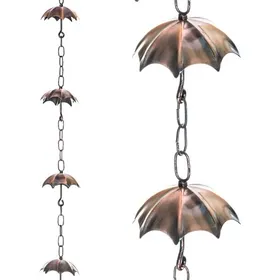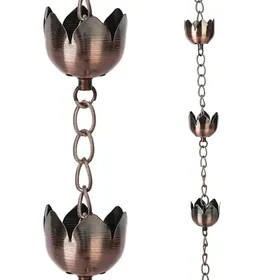Why is my rain chain not working? 4 expert solutions to this common problem
Experts explain the common reasons for a rain chain not working efficiently, and offer these easy home solutions
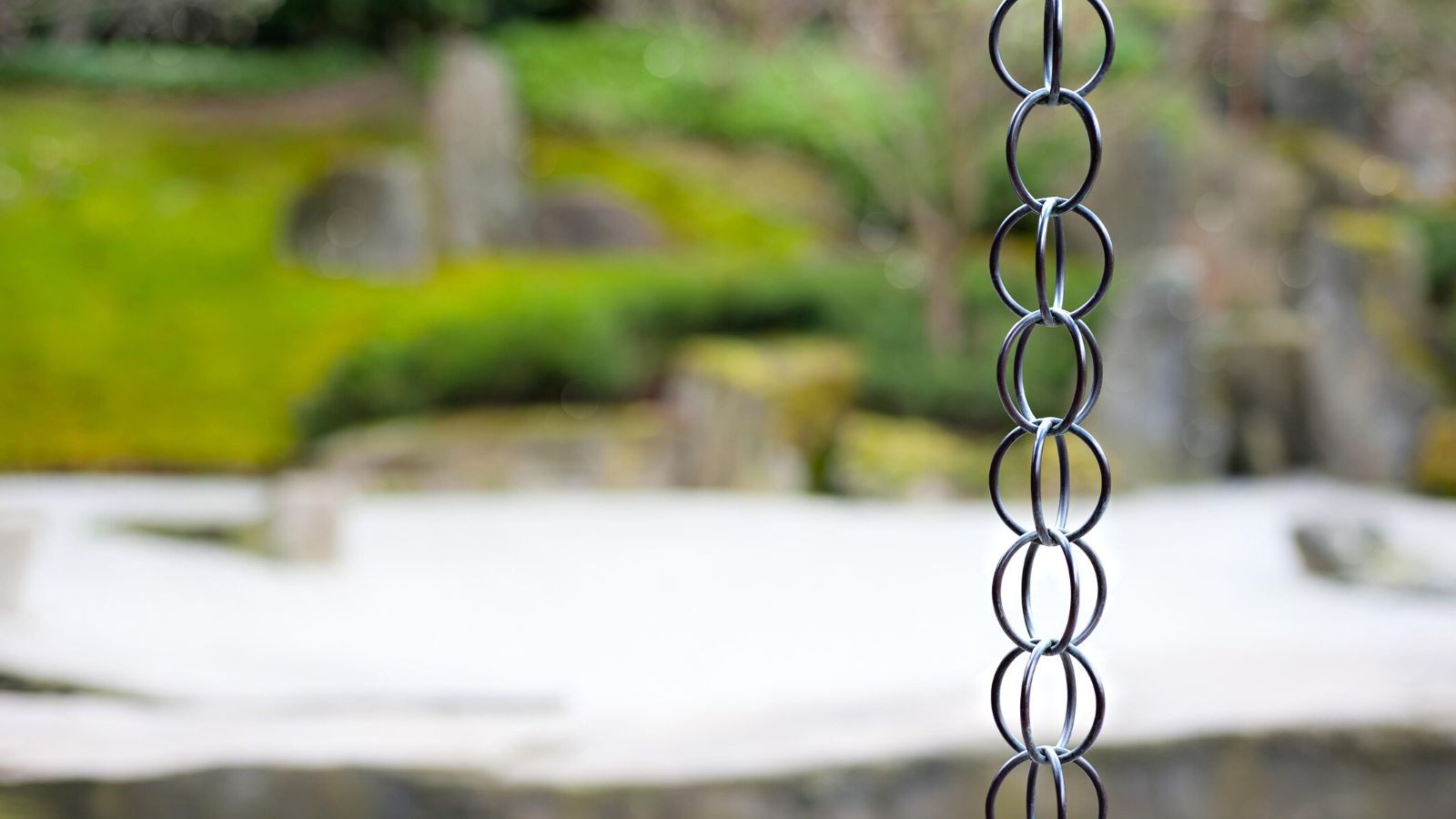

Rain chains are wonderful additions to a garden, from their ability to safely collect rainwater to their wonderful appearance and calming zen sounds, it is no wonder more people are opting to add these to their gardens. Adding these to your space may not be as simple as hanging them from your porch roof, however, especially if you want them to work correctly.
Now, if you are left wondering 'what is a rain chain and how does it work?', you are not alone. These originally Japanese inventions are a more beautiful alternative to a traditional downspout and guttering. Although simple in design, however, there are a few things that can mean these wonderful chimes do not work quite as you expect them to.
Here, experts explain why your rain chain may not be working and how you can fix it with ease.
Why is my rain chain not working?
If your less-than-satisfactory rain chain has left you wondering are rain chains better than downspouts, it may be that you have not installed your chain correctly.
This is what experts have to say about your malfunctioning rain chain.
1. A noisy rain chain
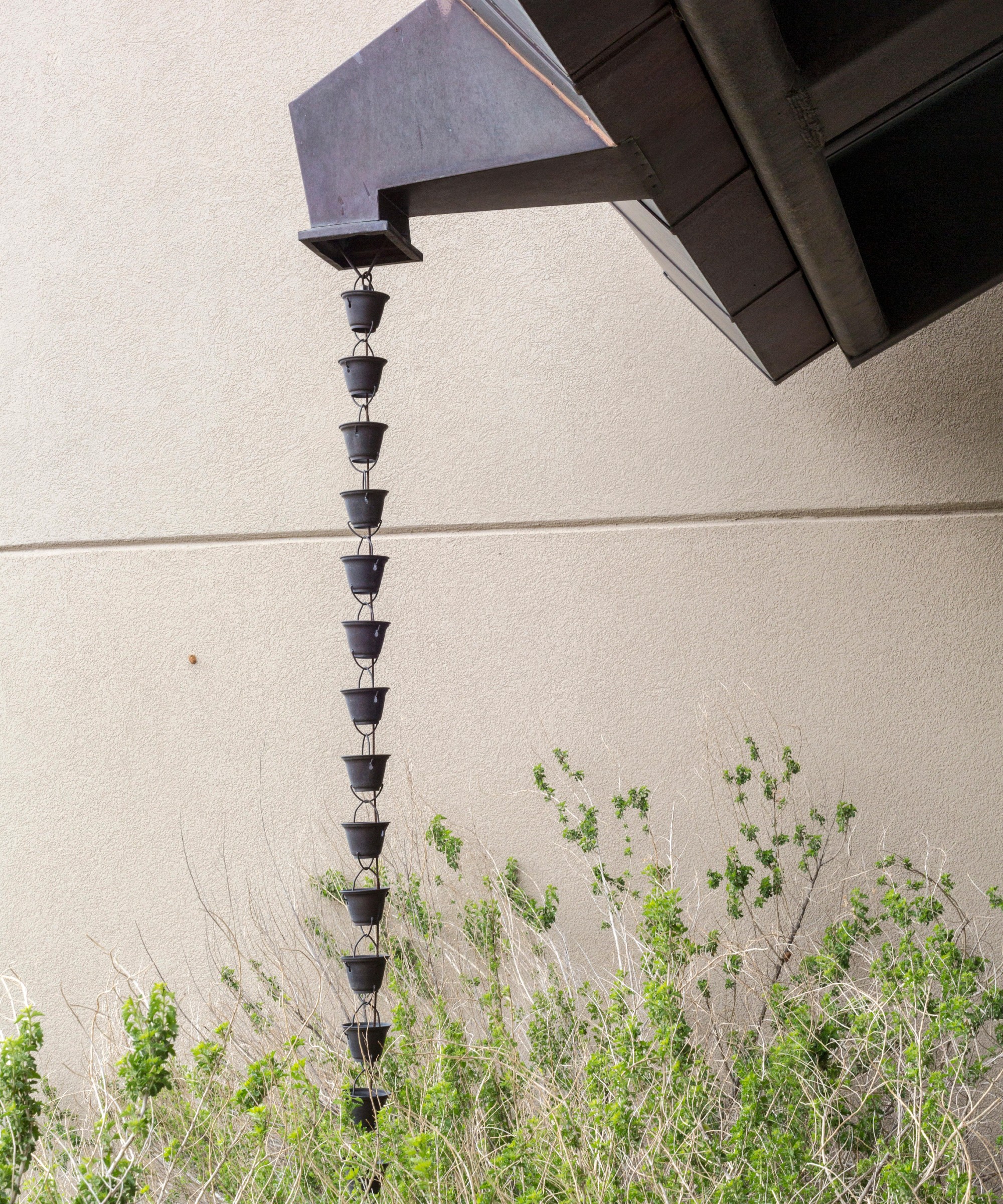
While rain chains can create a rather pleasant sound, with some making wonderful additions to zen Japanese garden ideas and sensory garden ideas, an overtly noisy rain chain can be disruptive to your garden's peace and quiet.
'The one issue we see time and time again with rain chains is homeowners complaining about the noise that can come from them. If the rain in your area is quite heavy there’s going to be an increased flow down the rain chain and they’re not really designed to handle large volumes of water,' explains Des Brosnan, a gardening and home maintenance expert at Brosnan Property Solutions. 'During heavy rains, they are prone to creating puddles, which in turn leads to loud splashing. Rainwater will pool at the base of the chain, which will grow over time as the water rushes down the chain.
Design expertise in your inbox – from inspiring decorating ideas and beautiful celebrity homes to practical gardening advice and shopping round-ups.
'Rain chains should always be used in conjunction with a traditional downspout,' Des advises. Using a combination of the two will help to take some of the pressure off of the rain chain and dampen excessive noise.
2. Rain chains freezing
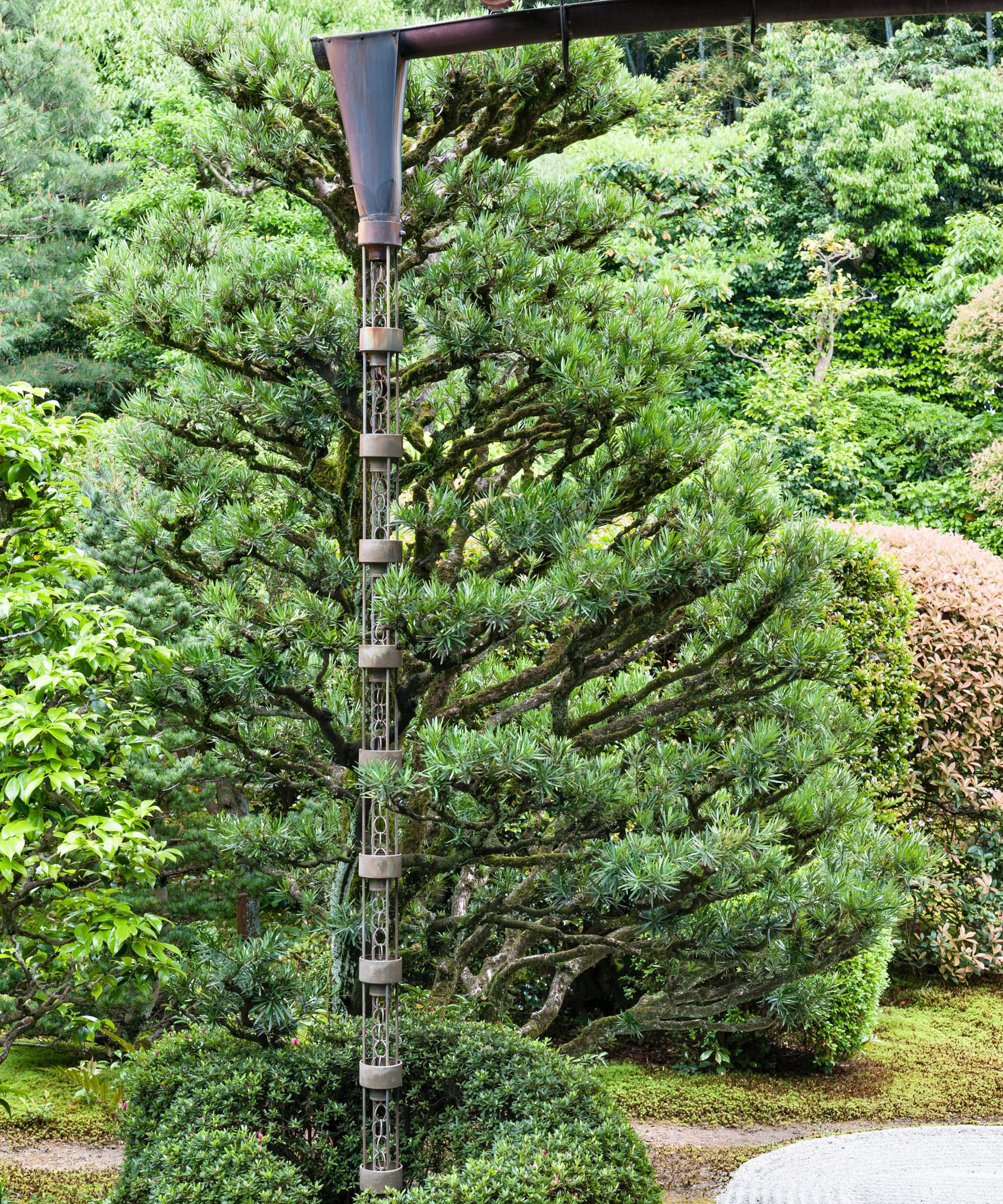
If you live in particularly cold climates then a rain chain can sometimes be a little more hassle than in more temperate parts of the world.
'Rain chains are also prone to freezing,' Des says, 'usually, this isn’t an issue but if you have installed a particular long rain chain, you need to take some precautions as the ice can place excess weight on the chain, causing it to snap and come apart from its hook.
'Make sure to keep an eye on your chains and knock off any ice as it forms, try not to allow it to build up,' he suggests.
If you decide to use a form of anti-freeze on your rain chain to help with frosts in winter, make sure to avoid collecting any rainwater from the chain during this time. the anti-freeze runoff can easily contaminate water used for drinking, cleaning, and watering plants causing undue damage.
3. Rain chains clogging
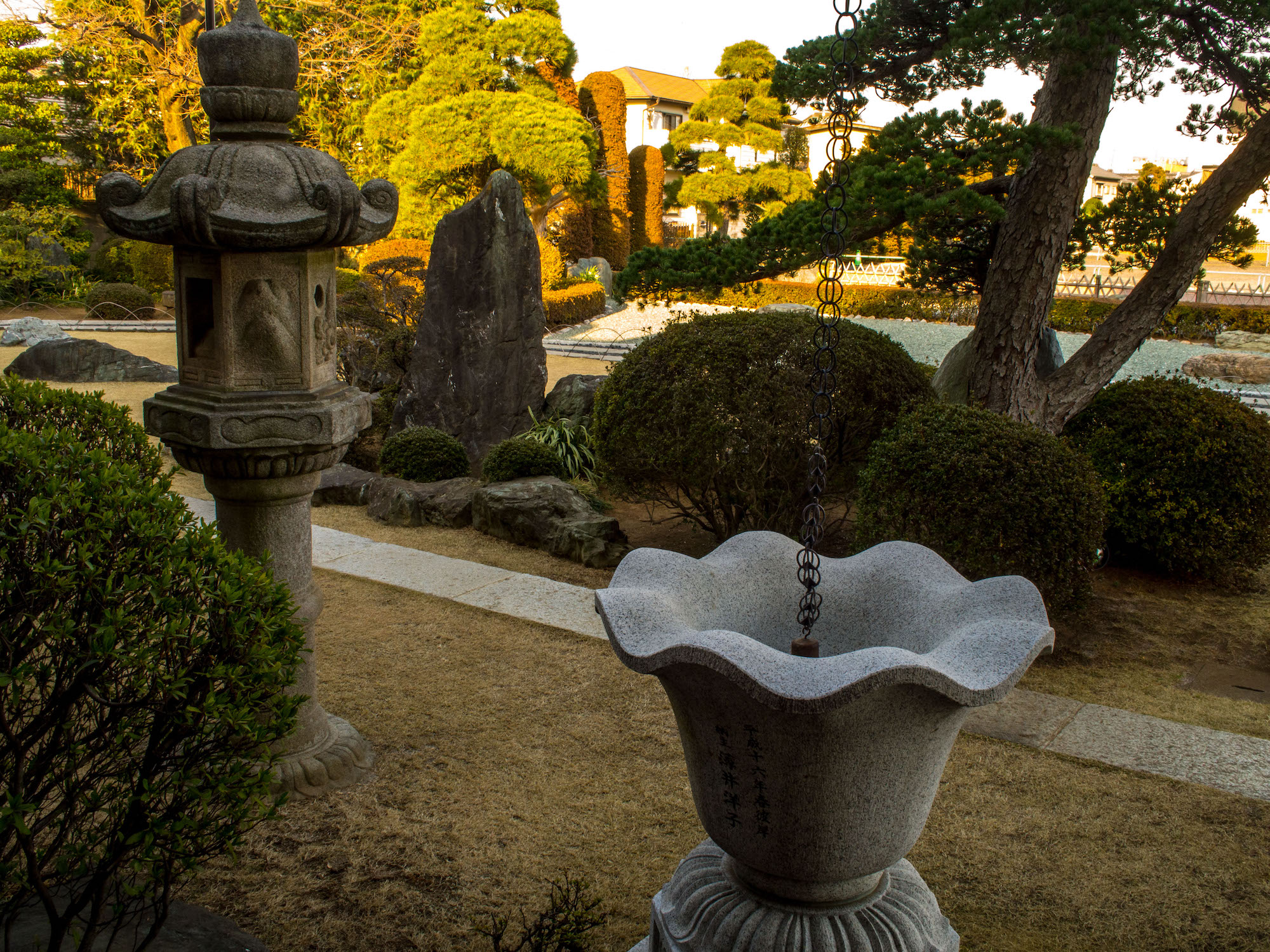
'Obviously one of the major appeals of a rain chain is the fact that it can’t become as easily blocked with gunk and debris as a traditional gutter, but blockages can occur, especially if the water is running off of a roof or coming from a gutter,' Des explains. While this may seem to take away from the appeal of a rain chain, removing build-up from a chain is far easier than emptying out gutters and downspouts when preparing a home for fall.
'Sediment can build up over time in the links of the chains which can disrupt the flow of the water and send it in a few different directions. The good news is they only need to be cleaned off around once a year,' Des assures.
4. Rain chain not directing water properly
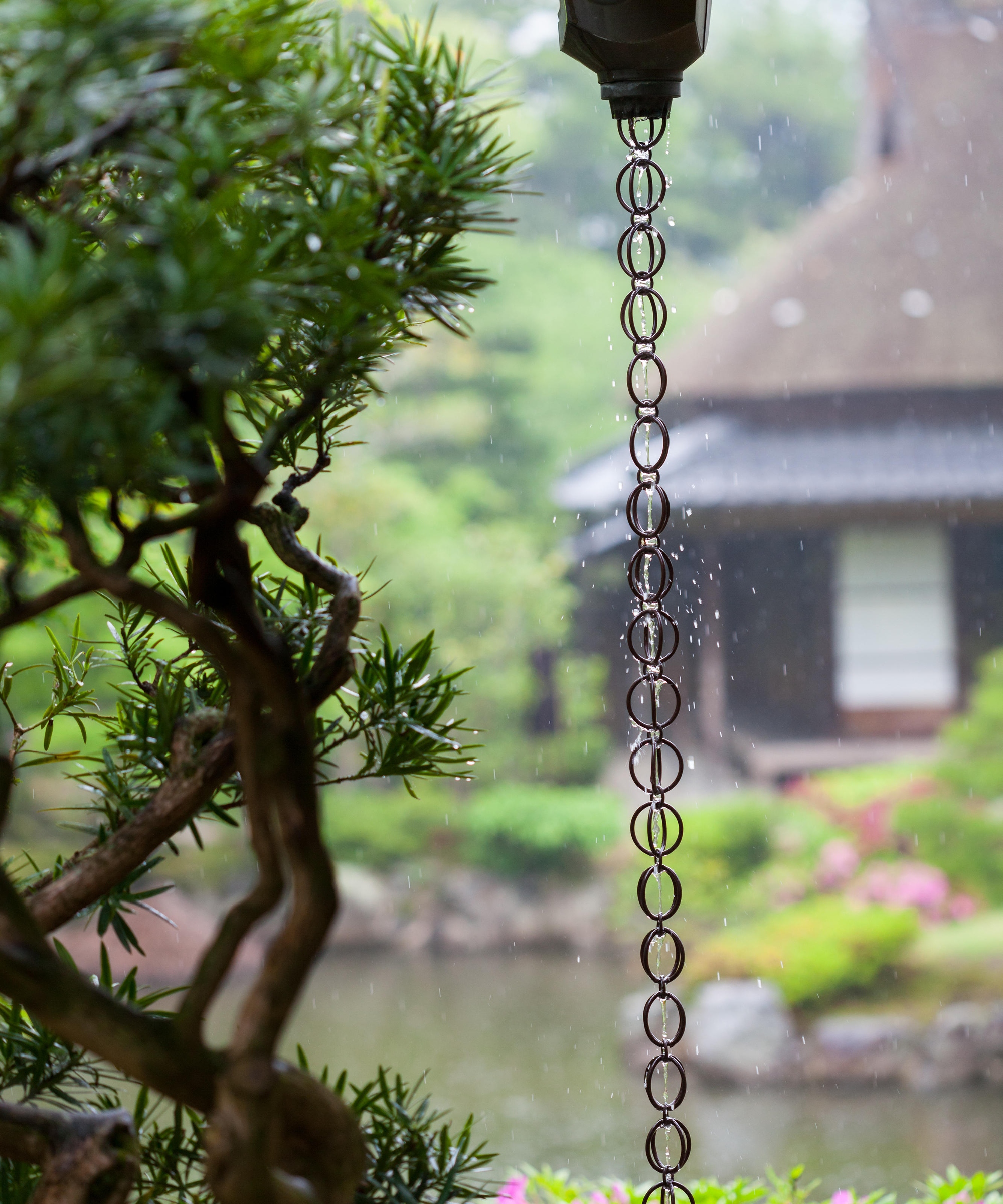
One of the most common issues owners of rain chains experience is improper water drainage. The main cause of this is usually the incorrect placement of a rain chain or a rain chain that is relied on solely for drainage without an additional downspout.
'Rain chains should be placed only in areas where you would traditionally place a downspout if you want them to work correctly,' Des explains, 'their purpose is just to direct the flow of water away from the property and back into the ground.
Luckily the type of rain chain you select is rarely the issue, with the type of metal used to create the chain being solely decorative. 'When it comes to the material of the rain chain, it's just personal preference really,' Des assures. 'Copper is the most common, it has that reddish look that homeowners love. Alternatively, you can purchase stainless steel options, aluminum, or even brass.'

The umbrella rain chain extends 72" in length, formed of 8 umbrella-shaped cups. Each cup has a wide flared mouth to efficiently capture most of the rainwater with slightly indented and defined petals.
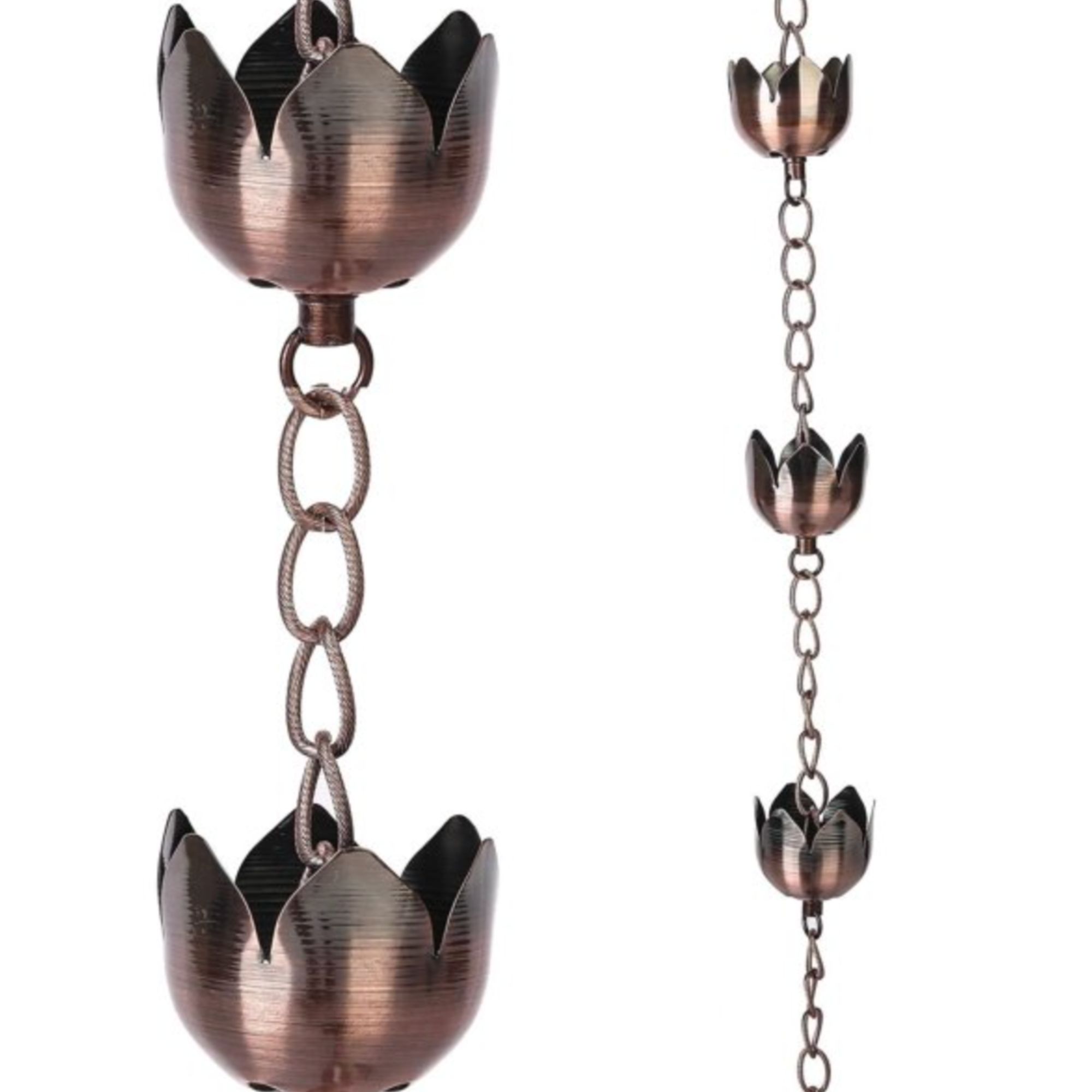
Each cup on this rain chain has a wide flared mouth to efficiently capture most of the rainwater. Versatile and lightweight, this chain provides a soothing rain sound while remaining weather resistant and long-lasting.
Do rain chains get clogged?
Rain chains are designed to ensure the flow of water without clogs unlike a traditional rain spout or gutter, however, occasional debris build-up can cause slow water movement. Because of this, it is usually a good idea to clean your rain chain once a year to ensure optimum performance.
Should I take my rain chain down for winter?
You should take a rain chain down if you live in an area that commonly experiences heavy snow, high winds, or harsh ice to help prevent damage to your rain chain. If you live in a more temperate climate that only experiences rains and occasional winds then leaving your rain chain out over winter is generally fine.

Chiana has been at Homes & Gardens for two years and is our resident 'queen' of non-toxic living. She spends most of her time producing content for the Solved section of the website, helping readers get the most out of their homes through clever decluttering, cleaning, and tidying tips. She was named one of Fixr's top home improvement journalists in 2024.

